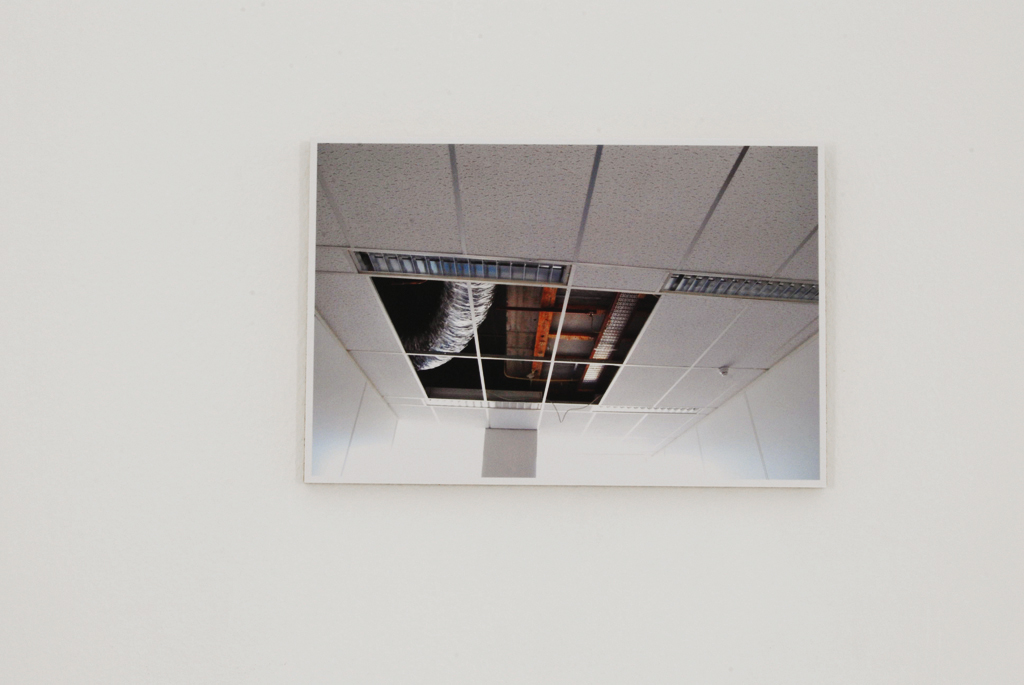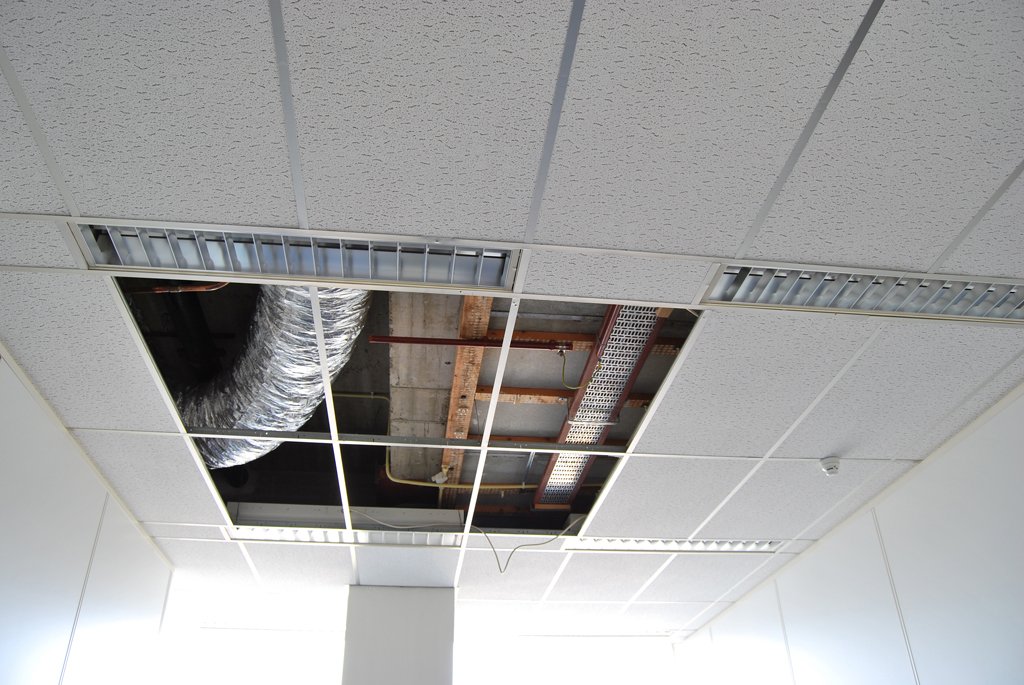To Live Within One’s Means
6 ceiling slabs with plywood construction, 204 x 192 cm, 2008
Item on loan by: agentur:

© Exhibition view Depth of Texture
Gallery Area 53, Vienna, 2008
Reaching for the Ceiling
Wall, floor, and ceiling panels, as composite elements of art spaces and as objects in them, evoke associations. They allude both in formal terms and in the engagement with their functional uses to a dense network of references in the more recent history of art. So, for example, minimal art comes to mind, which, in its reduction to the basic determinants of spatial appearance, addresses the relationship to the environment and spatial function. Or even works of the institutional critique of the 1970s, which revealed the apparent neutrality of the gallery and exhibition space as a myth with interventions in the smooth surfaces of the white cube and by laying open the aesthetic, social and, above all, the economic context.

© Exhibition view Depth of Texture: Ceiling 1.6, Gallery Area 53, Vienna, 2008
The six ceiling panels on a gallery wall in Vienna and, also shown there, the photograph of the ceiling to a room where these panels are clearly missing—whereby the view is freed to the otherwise concealed ventilation shafts, lengths of cables, etc. underneath them—may remind one of the abovementioned art historical points of reference, however the title of the work To Live Within One’s Means. Sitting in Amsterdam – Watching a Hole in the Ceiling directs one’s thoughts in another direction. The ceiling panels are not actually missing in the gallery but somewhere else that, according to the title, is to be found in Amsterdam. Following this trail, an intellectual association quickly develops between the gallery space in Vienna and the other place as well as, in a subsequent line of thought, between the processes involved in the reception of the work occurring right here and right now and those of the artwork’s production. While one is looking at the ceiling panels and the photograph, the artist is apparently “watching a hole in the ceiling” in Amsterdam. This imagined parallelism of the two processes links the material substrata of a room with the social contexts of its production, use, and appropriation. The absent artist and the viewer enter into a relationship mediated via a “placeholder” that alludes to the social structures of action and interaction—in this case the processes of the production and reception of art (works). Before this background the quasi-simultaneous acts of looking at a piece of (missing) ceiling also appears, however, to imply a shared authorship of the artwork.


© Ceiling 1.1, Ceiling 1.6, Photo on wood, 30 x 20 cm, 2008
The studio space and the exhibition space as well as the practices of production and reception allied to these appear far apart—at second glance, though, the acts of “reaching for the ceiling,” of “staring holes in the ceiling,” and of “looking at six ceiling panels” are very close to one another.
(Sønke Gau)